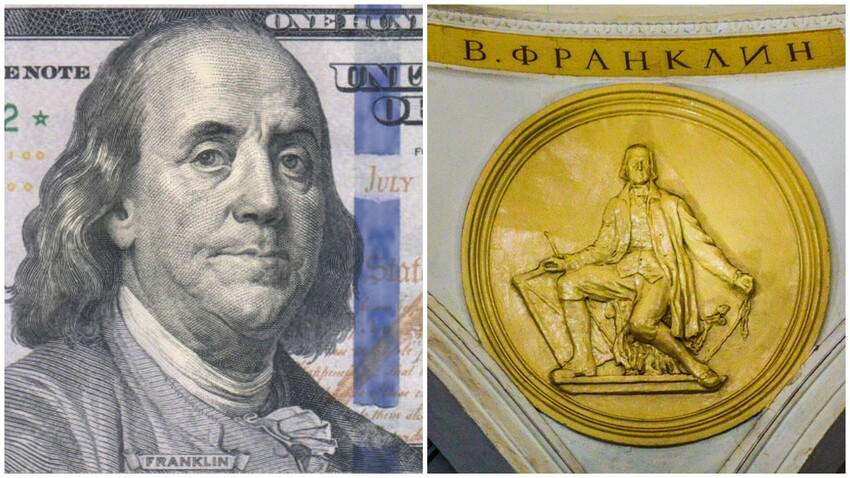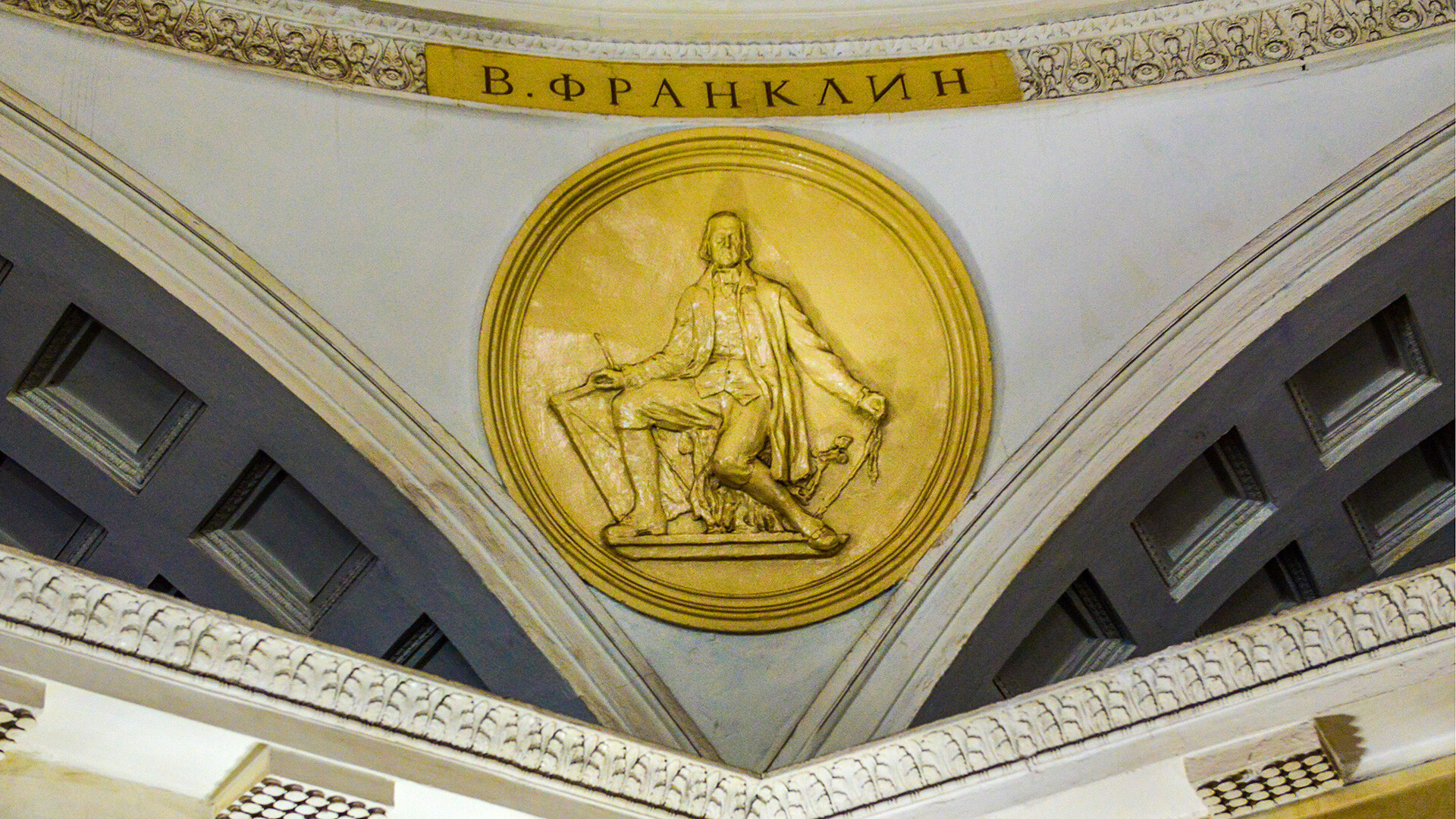
It's neither a joke nor a prank: In Elektrozavodskaya station’s vestibule, you can see a portrait relief of Benjamin Franklin, the man from the 100-dollar bill!
The construction of the station began in 1939: Its interior decoration was supposed to evoke the ‘Elektrozavod’ electrical equipment plant located nearby. For example, the ceiling of the central hall literally radiates with the light from 318 light fittings installed in six rows. And relief portraits of scientists who became the founding fathers of electrical engineering, along with their key inventions, adorn the Elektrozavodskaya station vestibule.

They are: Mikhail Lomonosov, who described the basic principles of the theory of electricity, portrayed with pen and paper; Alexander Popov with his lightning detector; Pavel Yablochkov with his carbon arc lamp (Yablochkov candle); Michael Faraday with a prototype electric machine; William Gilbert, who coined the term "electricity", depicted with an amber sphere; and, finally, Benjamin Franklin - with a lightning rod.

Franklin, one of the founding fathers of the U.S., studied the electrical nature of the processes involved in the formation of lightning and invented the lightning conductor to protect buildings from lightning strikes. And, in 1789, he was the first American to become a foreign member of the Imperial Academy of Sciences in St. Petersburg. He was also, incidentally, the first person to establish scientific exchange between America and Russia, sending an edition of the transactions of the American Philosophical Society to St. Petersburg, complete with a dedicatory inscription.
Curiously, the relief portrait at Elektrozavodskaya station is inscribed: "V. Franklin". It's not a mistake: At least until the late 1950s, he was known in Russian as ‘Veniamin’ Franklin.
If using any of Russia Beyond's content, partly or in full, always provide an active hyperlink to the original material.
Subscribe
to our newsletter!
Get the week's best stories straight to your inbox